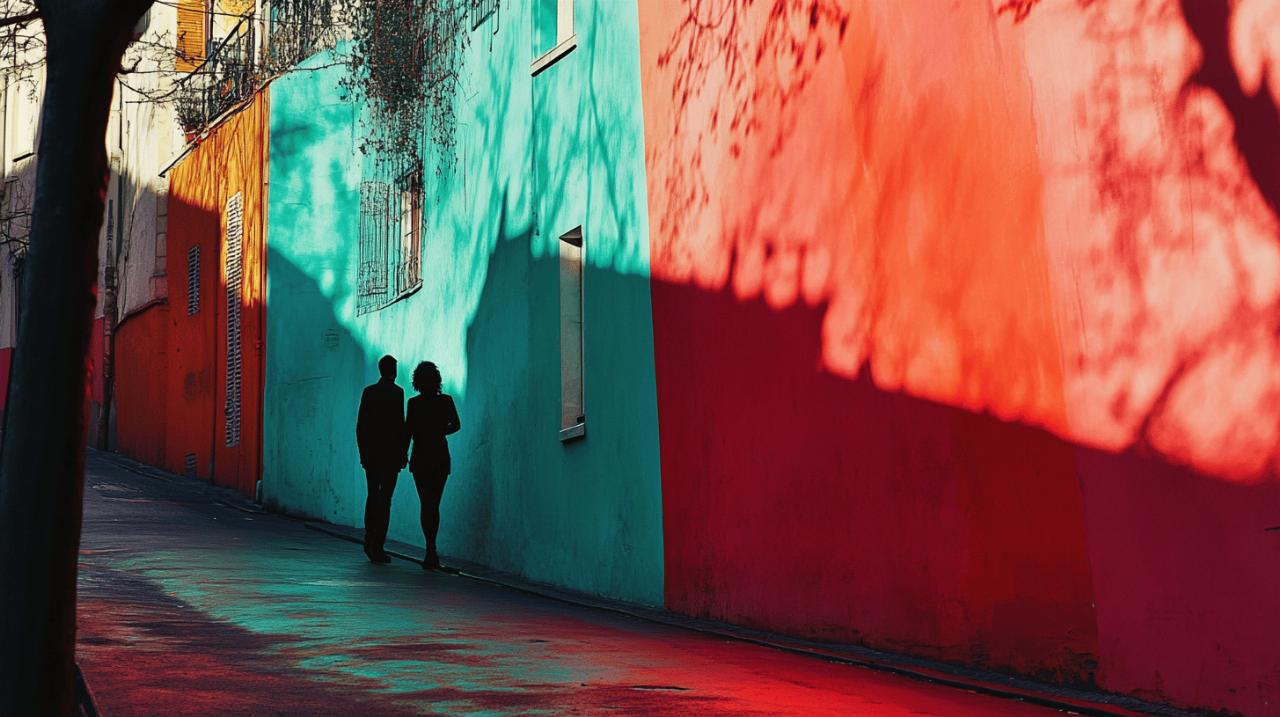Glowing Reviews: The Chemistry of Luminescence and Visual Impact in Le Déclic 1 – NEW Colour Edition
There exists within the realm of graphic literature a curious tension between the stark austerity of black and white and the vivid allure of colour. When exploring the provocative world of Guido Crepax, particularly his daring work Le Déclic, one finds this tension at the very heart of the visual experience. The recent colour edition has reignited conversations about how visual treatment shapes narrative impact, bringing fresh luminescence to a tale already steeped in controversy and artistic ambition. For readers navigating the maze of editions, formats, and critical opinions, understanding the chemistry of these visual choices becomes essential to appreciating what makes this work both compelling and divisive.
From Monochrome Mystery to Chromatic Brilliance: The Evolution of Le Déclic's Visual Language
The Stark Beauty of Black and White: Why Noir et Blanc Still Captivates
The original presentation of Le Déclic in monochrome offered readers a strikingly austere visual experience that seemed perfectly suited to its provocative subject matter. Black and white graphic storytelling possesses an inherent quality that lends itself to themes of psychological tension and moral ambiguity. The absence of colour forces the eye to focus on composition, contrast, and the interplay of shadow and light. In Crepax's hands, this limitation became a strength, creating an almost voyeuristic quality that heightened the narrative's unsettling atmosphere. The technique recalls the dramatic chiaroscuro of Caravaggio, where light and darkness clash to reveal hidden truths, or the bleak yet beautiful cinematography of Ingmar Bergman, whose films stripped away visual distraction to expose raw human emotion.
Monochrome storytelling demands a certain discipline from both creator and audience. Without the emotional shorthand that colour provides, the narrative must rely more heavily on line work, pacing, and spatial relationships. For Le Déclic, a tale centred on a woman whose inhibitions dissolve following an encounter with a peculiar device, the starkness of noir et blanc amplified the psychological dimensions of the story. The format created a clinical distance that paradoxically drew readers closer to the transgressive elements of the plot, making the experience simultaneously alienating and intimate.
Colour Edition Unveiled: What the New Visual Treatment Brings to Crepax's Vision
The arrival of the colour edition represents a significant reimagining of how Le Déclic communicates its provocative narrative. Colour introduces an entirely different visual vocabulary, one that can either enhance or alter the emotional register of the original work. Where monochrome offered severity and focus, colour brings warmth, depth, and a more immediate sensory engagement. The new treatment allows for subtler gradations of mood and atmosphere, potentially making the work more accessible to contemporary audiences accustomed to vivid visual media.
Yet this transformation is not without its complexities. Purists might argue that adding colour softens edges that were deliberately sharpened in the original presentation, potentially diluting the unsettling power that made Le Déclic so distinctive. The choice between monochrome and colour becomes more than a matter of aesthetic preference; it reflects fundamentally different approaches to how narrative tension and thematic weight are conveyed. The colour edition offers a different kind of luminescence, one that illuminates details previously lost in shadow whilst perhaps sacrificing some of the original's stark visual punch. Both versions possess validity, yet they speak to different sensibilities and offer distinctly different reading experiences.
Guido Crepax's Daring Narrative: Understanding the Provocative World of Le Déclic
A Gadget, Lost Inhibitions, and Mature Storytelling: Unpacking the Plot's Edgy Core
At the heart of Le Déclic lies a narrative premise that remains as daring today as when first conceived. The story follows a woman whose encounter with a mysterious device strips away her social inhibitions, plunging her into a world where conventional moral boundaries cease to hold sway. This is unquestionably material aimed at a mature audience, dealing frankly with themes of desire, control, and the fragility of social conditioning. Crepax approached these themes with an unflinching directness that distinguished his work from more cautious contemporaries, crafting a narrative that refuses to offer comfortable moral conclusions or easy resolutions.
The plot's edgy core derives not merely from its explicit content but from its willingness to examine the psychological dimensions of transgression. The device in question serves as both a literal plot mechanism and a metaphorical exploration of what lies beneath civilised behaviour. What happens when the internal mechanisms that govern restraint are suddenly switched off? Crepax's narrative suggests that beneath the veneer of social propriety exists a more chaotic and unsettling reality, one that most prefer not to acknowledge. This philosophical dimension elevates Le Déclic beyond mere titillation, positioning it as a genuine inquiry into human nature, albeit one wrapped in provocative imagery and situations that will undoubtedly prove too confronting for some readers.
Artistic influences: from caravaggio's chiaroscuro to bergman's bleak aesthetics
Crepax's visual and thematic approach did not emerge in isolation but drew from a rich tradition of artists who explored darkness both literal and metaphorical. The influence of Caravaggio manifests in the dramatic use of light and shadow, the way illumination can reveal whilst simultaneously concealing, creating compositions that possess a theatrical intensity. This baroque sensibility infuses Le Déclic with a sense of heightened reality, where every frame carries weight and significance beyond mere illustration.
Equally important is the influence of Ingmar Bergman, whose cinematic explorations of psychological and moral complexity found expression through stark visual compositions and unflinching examinations of human frailty. Bergman's willingness to present bleakness without sentiment, to allow discomfort to linger rather than resolving it neatly, resonates throughout Crepax's work. Both artists understood that sometimes beauty emerges not from harmony but from confrontation, not from resolution but from sustained tension. These influences combined to create a visual and narrative language that remains distinctive within the broader landscape of graphic literature, marking Le Déclic as a work of genuine artistic ambition rather than simple commercial exploitation.
Collecting Le Déclic: Navigating Editions, Formats, and Where to Find Your Copy
Individual albums versus the intégrale edition: which format suits your bookshelf?
 For those seeking to add Le Déclic to their collection, the first decision involves choosing between individual albums and the comprehensive intégrale edition. Individual albums offer the original serialised experience, allowing readers to engage with the narrative in discrete chapters as initially intended. This approach can provide natural breathing spaces within what can be an intense reading experience, though it also means acquiring multiple volumes and potentially facing inconsistency in availability or condition.
For those seeking to add Le Déclic to their collection, the first decision involves choosing between individual albums and the comprehensive intégrale edition. Individual albums offer the original serialised experience, allowing readers to engage with the narrative in discrete chapters as initially intended. This approach can provide natural breathing spaces within what can be an intense reading experience, though it also means acquiring multiple volumes and potentially facing inconsistency in availability or condition.
The intégrale edition, by contrast, presents the complete saga in a single substantial tome. This format offers the advantage of having the entire narrative arc immediately accessible, creating a more immersive and continuous reading experience. For collectors with limited shelf space or those preferring comprehensive editions, the intégrale represents an attractive option. The substantial nature of such a volume also lends it a certain gravitas, marking it as a significant work worthy of prominent placement in a collection. Publishers such as Glénat have produced various editions over the years, each with its own characteristics regarding paper quality, binding, and additional materials, making research worthwhile before committing to a purchase.
Tracking Down Your Copy: Tips on EAN Codes, Second-Hand Bargains, and Delivery Costs
Locating a specific edition of Le Déclic requires a bit of detective work, particularly for those seeking particular versions or formats. The EAN code, that string of numbers identifying each product uniquely, becomes an invaluable tool when searching online retailers or specialised dealers. Armed with the correct EAN, collectors can ensure they are acquiring precisely the edition they desire rather than discovering too late that they have purchased an unexpected variant.
The second-hand market offers opportunities for those willing to hunt for bargains. An occasion copy, provided it remains in decent condition, can represent significant savings compared to new editions, particularly for out-of-print versions. Online marketplaces, specialist book dealers, and even physical shops dedicated to graphic literature all merit exploration. However, when purchasing second-hand, careful attention to seller descriptions and photographic evidence becomes essential to avoid disappointment. Delivery charges can add substantially to the final cost, particularly for international purchases, so factoring in livraison expenses before committing ensures no unpleasant surprises when the final bill arrives. Comparing total costs across multiple sellers often reveals that the cheapest listing price does not necessarily translate to the best overall value once shipping enters the equation.
What the Punters Are Saying: Reader Reviews and the Subjective Appeal of Le Déclic
Checking out the avis: how other readers rate this provocative tome
Reader reviews of Le Déclic reveal a predictably divided response, reflecting the inherently polarising nature of Crepax's material. Some avis praise the work's artistic ambition and willingness to explore uncomfortable psychological territory without compromise, celebrating it as a landmark achievement in mature graphic storytelling. These enthusiasts appreciate the visual sophistication and thematic depth, viewing Le Déclic as a work that transcends its provocative surface to offer genuine insight into human nature.
Conversely, other reviews express discomfort or outright criticism, finding the material exploitative or unnecessarily transgressive. These readers often acknowledge the technical skill evident in the work whilst questioning whether the narrative justifies its explicit content or merely uses controversy as a substitute for substance. The spectrum of avis underscores an important reality: Le Déclic exists as a deliberately challenging work that will never achieve universal appeal. Prospective readers would be wise to sample opinions from multiple sources, recognising that subjective responses to provocative material vary enormously and that what one reader considers profound another may find gratuitous.
Is Le Déclic Your Cup of Tea? Understanding Its Niche Appeal and Target Audience
Determining whether Le Déclic suits your particular tastes requires honest self-assessment about tolerance for challenging content and appreciation for experimental narrative techniques. This is emphatically not a work designed for casual browsing or for readers seeking conventional storytelling with comfortable resolutions. The material demands engagement with uncomfortable themes and acceptance of explicit visual content that many will find beyond their comfort zone. It certainly ranks as something you would not leave lying about for unexpected visitors to stumble upon.
The ideal audience for Le Déclic consists of readers who appreciate graphic literature as a serious artistic medium capable of exploring complex psychological and philosophical territory. Those drawn to challenging cinema, experimental literature, or art that prioritises provocation over reassurance will likely find more to appreciate here than readers seeking straightforward entertainment. Understanding this niche appeal helps set appropriate expectations. Le Déclic rewards patience and willingness to engage with discomfort, offering in return a distinctive vision that remains memorable precisely because it refuses to compromise or conform to conventional expectations. Whether that vision resonates depends entirely on individual sensibilities, making this a work that inspires passionate advocacy and equally passionate rejection in roughly equal measure.
